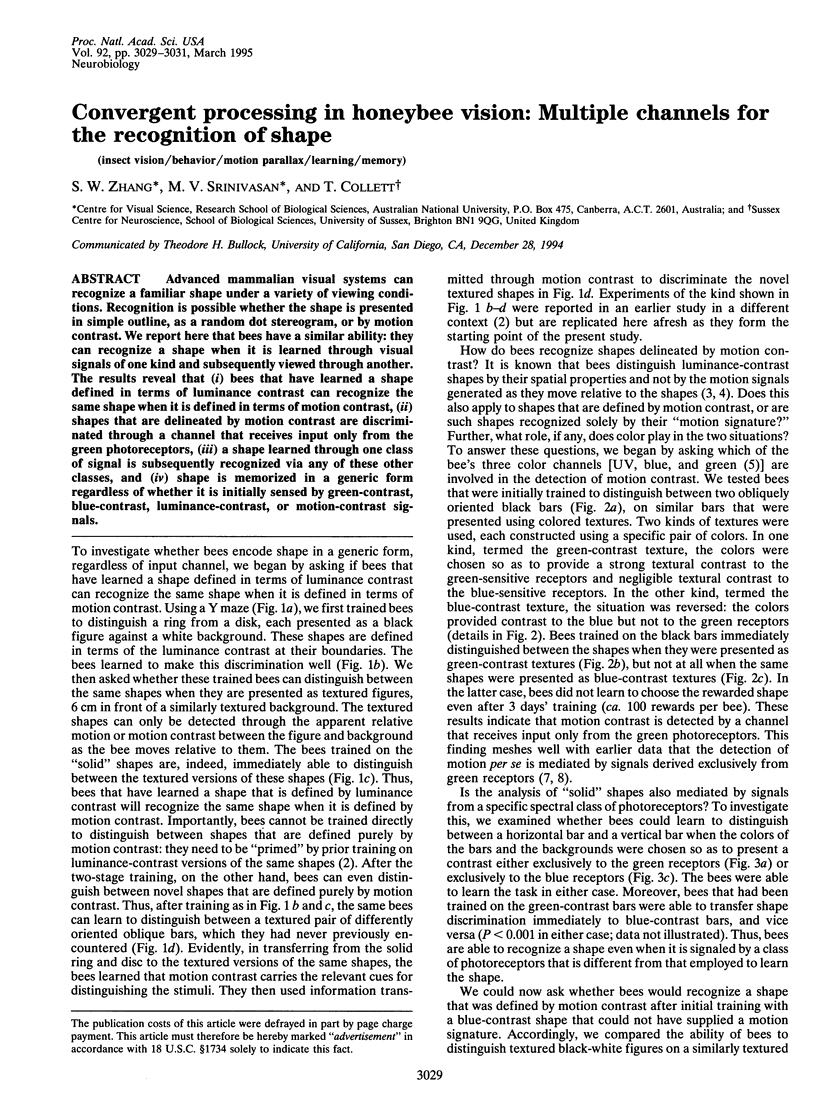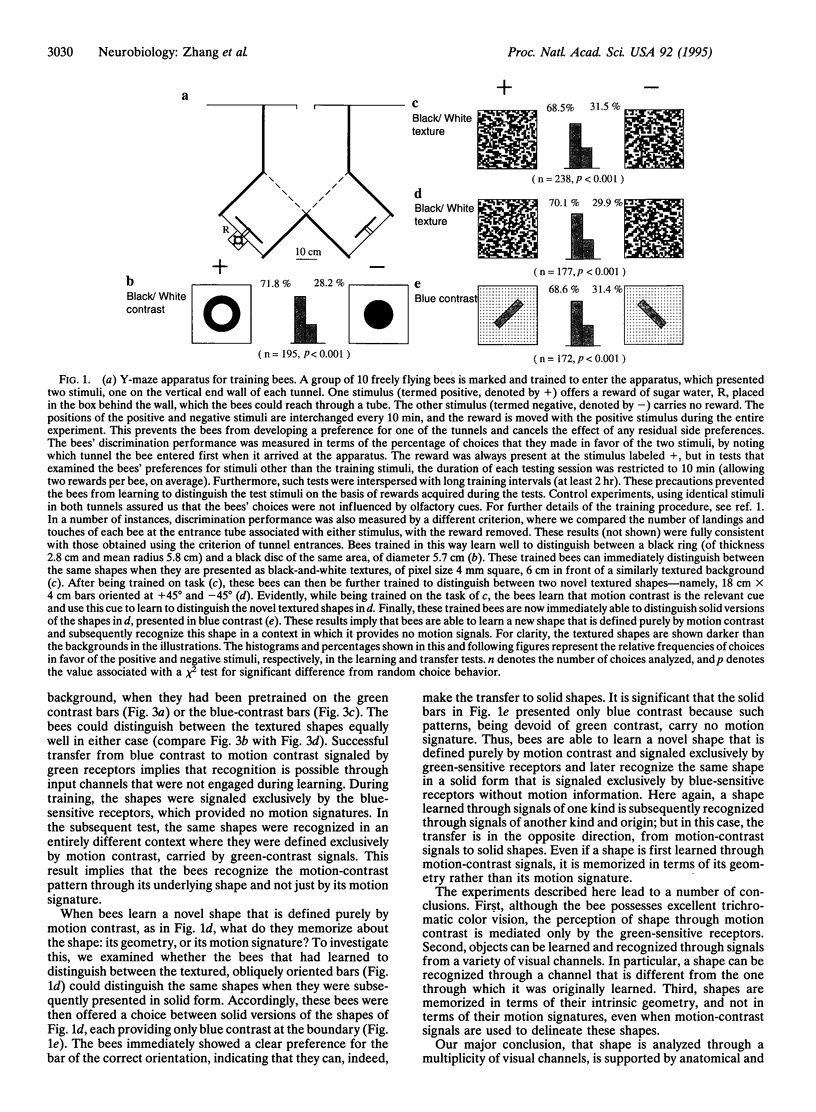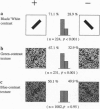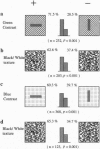Abstract
Advanced mammalian visual systems can recognize a familiar shape under a variety of viewing conditions. Recognition is possible whether the shape is presented in simple outline, as a random dot stereogram, or by motion contrast. We report here that bees have a similar ability: they can recognize a shape when it is learned through visual signals of one kind and subsequently viewed through another. The results reveal that (i) bees that have learned a shape defined in terms of luminance contrast can recognize the same shape when it is defined in terms of motion contrast, (ii) shapes that are delineated by motion contrast are discriminated through a channel that receives input only from the green photoreceptors, (iii) a shape learned through one class of signal is subsequently recognized via any of these other classes, and (iv) shape is memorized in a generic form regardless of whether it is initially sensed by green-contrast, blue-contrast, luminance-contrast, or motion-contrast signals.
Full text
PDF


Images in this article
Selected References
These references are in PubMed. This may not be the complete list of references from this article.
- Strausfeld N. J., Lee J. K. Neuronal basis for parallel visual processing in the fly. Vis Neurosci. 1991 Jul-Aug;7(1-2):13–33. doi: 10.1017/s0952523800010919. [DOI] [PubMed] [Google Scholar]





